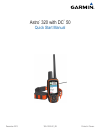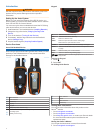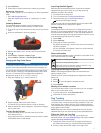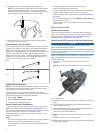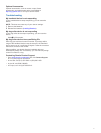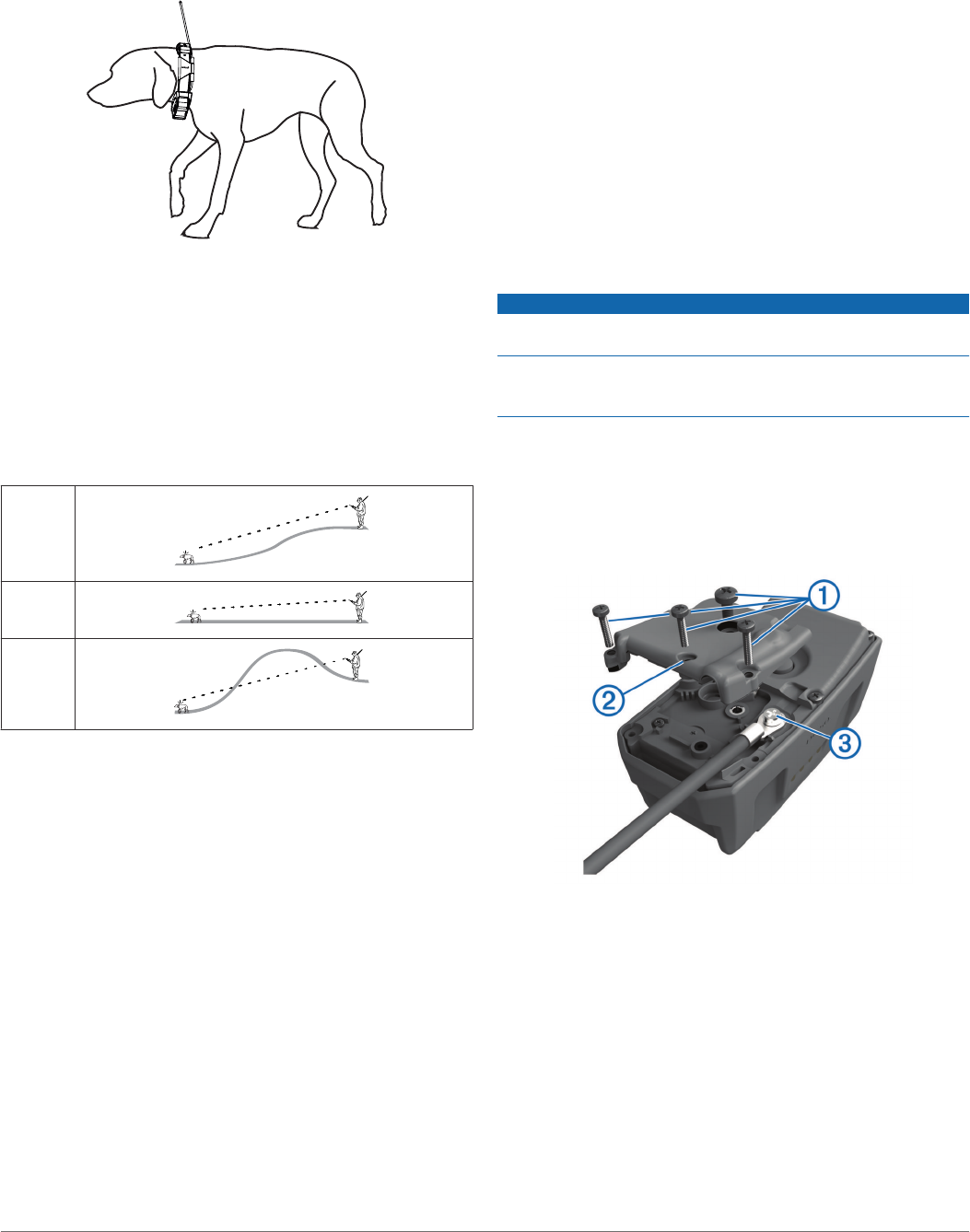
3
Tighten the strap so it is snug around the dog's neck.
NOTE: The collar should fit tightly and should not be able to
rotate or slide on the dog's neck. The dog must be able to
swallow food and water normally. You should observe your
dog's behavior to verify that the collar is not too tight.
4
If the strap is too long, cut off the excess, leaving at least
3 inches (7.62 cm) to spare.
Communication with the Collar
The handheld device and dog collar device use radio signals to
communicate. Objects in the path of radio signals degrade the
quality of the signals. Keeping an unobstructed line of sight
between your handheld device and your dog’s dog collar device
produces the best communication signal. Obstructed radio
waves result in a poor signal. To achieve the best line-of-sight
conditions, you should move to the highest elevation point in
your area (for example, on the top of a hill).
Best
Good
Poor
Calibrating the Compass
NOTE: You must calibrate the electronic compass outdoors. Do
not stand near objects that influence magnetic fields, such as
cars, buildings, or overhead power lines.
The device has a 3-axis electronic compass. You should
calibrate the compass after moving long distances, experiencing
temperature changes, or changing the batteries.
1
Select DOG > MENU.
2
Select Calibrate Compass > Start.
3
Follow the on-screen instructions.
Garmin BaseCamp™ BaseStation
To get the most from your Garmin device, you can download
BaseCamp software. Go to www.garmin.com/basecamp. You
can view and organize your maps, waypoints, routes, and tracks
and send them to your device. You can also use the
BaseStation feature to view the location of your dogs on your
computer in real time.
Tips
• Turn on the dog collar device and allow it to acquire satellites
before you put the dog collar device on your dog.
This allows the dog collar device to acquire satellite signals
much faster.
• Bring extra AA batteries for your handheld device.
• Use a fully charged dog collar device.
A fully charged dog collar device operates for approximately
26 hours when using five‑second interval reporting.
• Use line-of-sight radio communication (Communication with
the Collar).
• From the dog tracking page, select MENU > Small Numbers
to reduce the text size.
This allows you to view more dogs at one time on the dog
tracking page.
Device Information
VHF Radio Information
This product may be used only on specific radio frequencies,
which vary depending on the country of use. See the product
packaging or go to www.garmin.com/astro-legal for details
regarding the radio frequency of this product.
Replacing the VHF Antenna in the Dog Collar Device
NOTICE
Do not excessively bend the band that connects the main
device case with the GPS antenna.
When the cover is removed, do not disturb the sealant opposite
the VHF antenna, because this can damage the waterproof seal
of the dog collar device.
Before you replace the VHF antenna, you must remove all dirt,
water, and debris from the device. Also, you need a small
Phillips screwdriver.
1
Remove the 4 screws
À
from the cover over the VHF
antenna.
NOTE: You should note the location of the one short screw
Á
.
2
Pry off the cover.
3
Remove the screw
Â
securing the VHF antenna to the back
plate.
4
Pull the length of the antenna from the antenna guide to
remove the old antenna.
5
Loop the antenna guide around the collar strap, and thread
the new VHF antenna through the guide.
This helps to point the antenna up.
6
Replace the screw securing the VHF antenna to the back
plate.
7
Replace the cover over the VHF antenna.
8
Replace the 4 screws on the cover, replacing the short screw
in the correct location.
4



